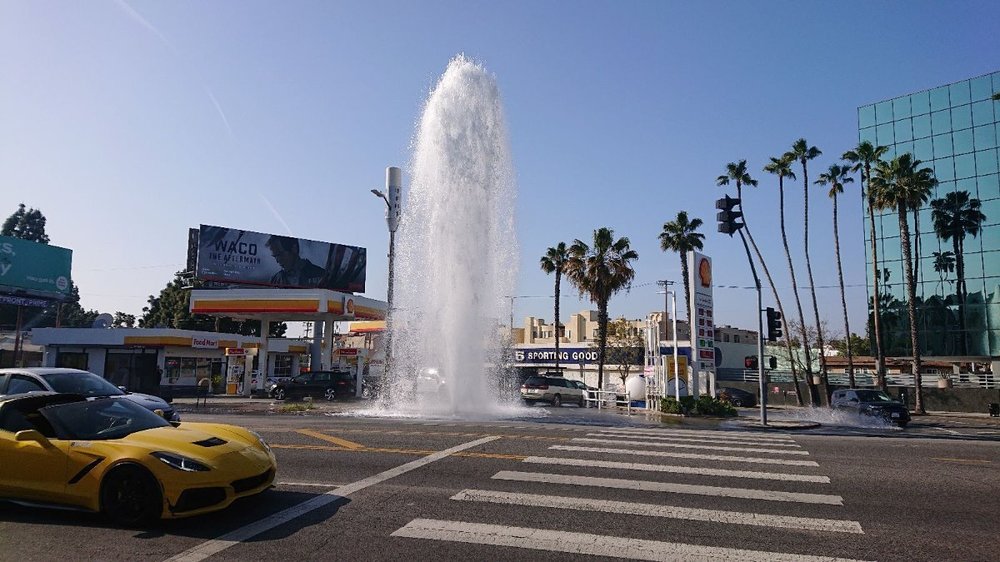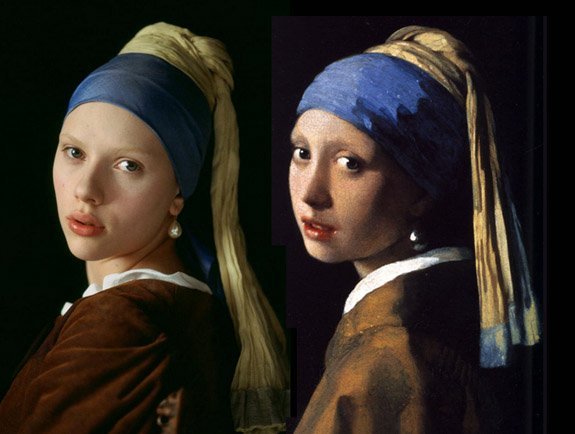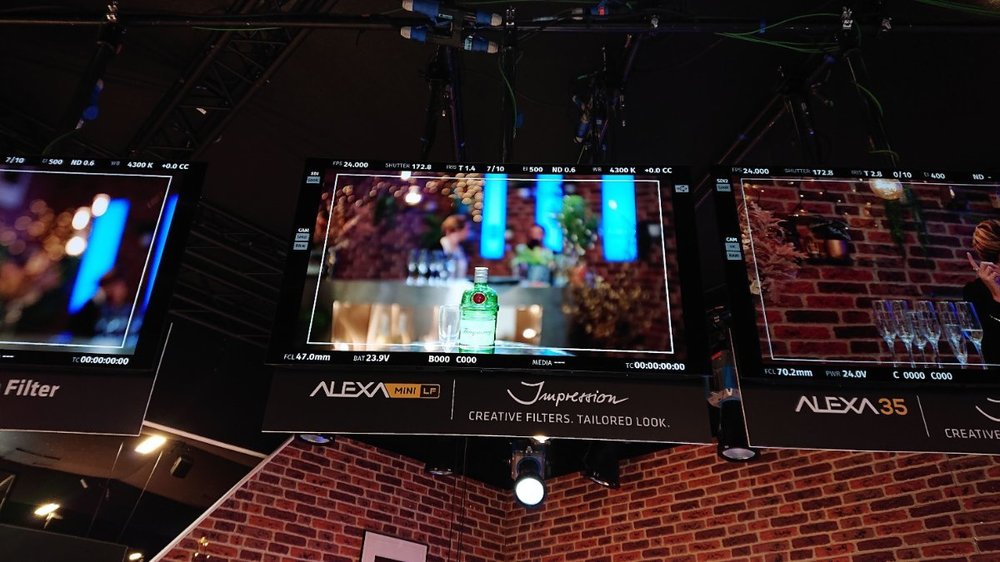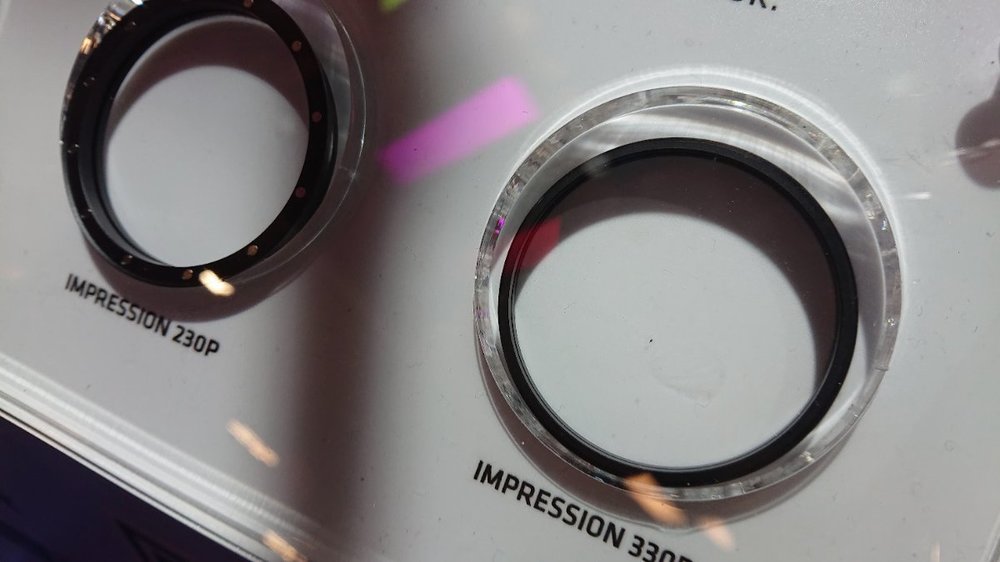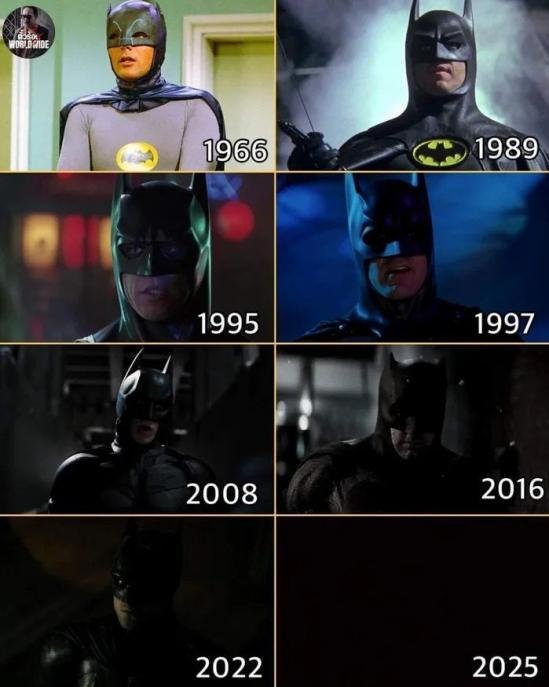-
Posts
13,756 -
Joined
-
Last visited
Everything posted by Phil Rhodes
-
That is some amazingly steady 16mm.
-
Is it too obvious to point out that shooting Super-8 in 500T is a somewhat orthogonal choice to those leading to clear and crisp images? I haven't checked recently, but every time I have checked for the last few years, 16mm (to include Super-16mm) was barely more expensive than Super-8 - even cheaper, quite often. 16mm cameras and lenses are better and the format is capable of far more. I don't know about 4K, exactly, but it can produce devilishly crisp HD pictures if you're willing to shoot the 50D on good glass and hold the thing steady.
-

I thought this only happened in the movies!
Phil Rhodes replied to Phil Rhodes's topic in Los Angeles, CA (US)
I'm not sure about the car - none was in evidence - but they seem to have bolted the fire hydrant back into place now. Looks like a large cast iron fabrication to me. -

I thought this only happened in the movies!
Phil Rhodes replied to Phil Rhodes's topic in Los Angeles, CA (US)
Yes, this was early afternoon yesterday on Ventura Boulevard near Radford Avenue, where the CBS studios are. -
I can't say how entranced I was to witness the real thing in person! Now, where can I see the two guys carrying the large pane of glass across an alleyway?
-
Hello! I'm making my annual pilgrimage to Vegas for the NAB show, then to LA for a week. It's always a pleasure to put faces to names so if anyone's interested in saying hi in person, that'd be great. Anyone aware of fun things going on? Best, Phil
-
In extremis, software can do it. Knoll Light Factory, for instance, makes a reasonably good fist of simulating that specific effect, and with a little manipulation using other filters you can achieve highly realistic results. This is the unprocessed output of the plugin. It's highly configurable, but the bottom left seems to be what you're after.
-

short written cinematographic statement
Phil Rhodes replied to Ariel Salati's topic in General Discussion
Hi Ariel I think we'd need to know a bit more about the situation. Are you being asked to shoot a production - a short, a TV show, a feature? What sort of production is it? - Phil -
One thing about CMOS sensors is that they're much more likely to have multi-tap outputs, which means that subsections of the array will potentually go through different amplifiers and analogue-to-digital converters. The flexibility to do that is a large part of the attractiveness of the CMOS process in the first place; there were a few CCDs which read out from both sides, and thus had two sets of output amplifiers, but modern designs with very high resolution and dynamic range need more. The electronics associated with each tile inevitably have small tolerances so they won't all perform in exactly the same way, particularly in terms of dynamic range and noise floor. As a result, each of them ends up requiring a certain amount of correction to avoid visible tiling in the image, which means that the overall performance of the whole sensor is intrinsically limited to the performance of the worst-performing tiles. That's possibly one of several contributory reasons why CMOS sensors can look a little less good than otherwise equivalent CCDs, particularly in terms of highlight handling. The difficulty with all this is that you'll very rarely see CMOS and CCD sensors with anything like identical performance goals, so, as the article Karim linked suggests, other factors are likely to make it difficult for anyone to get a particularly good eye for spotting the difference from an otherwise unmarked image. It's probably possible to train one's eye to spot a particular camera, and knowing what that camera uses might make it possible to associate CMOS or CCD with a particular image, but it's a bit of a stretch. I don't think it would ever have been plausible to achieve things like 8K, full-frame sensors which exhibit acceptable noise at hundreds of frames per second and thousands of ISO without using CMOS. Since those are things we apparently want, it's a moot point anyway. P
-
-
Never seen that, but it seems shady as hell. The domain sjsal.com is parked (that is, it's been registered by a domain registration company, but there's not a meaningful website on it). If they wanted to sell it buy-it-now, why wouldn't they just... sell it on eBay? Seems to me they're at the very least trying to avoid eBay's seller fees, which is against the rules, and would leave you unprotected in the event of any shadiness. Maybe contact ICE and see if they're missing an XTR?
-

What fixture is really light these scenes?
Phil Rhodes replied to Wenqi Wei's topic in Lighting for Film & Video
It would be my instinct to have it be camera-side of the subject, but if it's really enormous - like an eight-foot-square bit of diffusion, or something, it could be substantially "above" the actor without backlighting him too much. That one doesn't look that big. These days it could even be something like a popup parabolic softbox or lantern, possibly with skirts, etc. This seems to be a pretty popular way to do things at the moment, possibly because it's pretty procedural and easy and works in a wide variety of situations, facilitating quick setup of multiple angles which all look reasonably good. It's easy enough to trim for different setups without making it look wildly different in each, given you can just swing it back and forth to ensure people aren't being backlit too much. It does demand quite a bit of overhead space, more than exists in many domestic homes, and I wonder if there's a market for a product a bit like an Aladdin fabric light, but with an individual grid pocket around every emitter, so that it could create that sort of directional softlight in only a couple of inches of depth. -
You can in principle shoot video on something like a Fuji GFX100, which has a 43.9 by 32.9mm sensor; that's bigger than the LF but smaller than the 65. It's not a particularly wonderful video camera. It's a five-figure, medium-format, high-end stills monster and it doesn't have enormous specifications in moving picture mode. There are presumably other medium format cameras which will do similar things. For high end motion picture work, though, I think you're right - I'm not aware of anything other than the Alexa 65 that's bigger than LF. Several technical factors also apply here. There are now sensors in the Super-35mm/APS-C size range which accommodate 6K resolution without significant compromise. Bigger sensors make lenses huge, heavy and vastly expensive, and demand either more light or superhuman focus pullers. Could we, sure, will we? Why?
-

Eiki ex 1500 1510 Ballast
Phil Rhodes replied to Giampietro Bortolotti's topic in General Discussion
As I think you noticed, I donated one of those to someone on this forum a few years ago and he may still have it... unfortunately I don't have the details of whoever took it in the end. The lamp ballast for one of those is not a trivial thing. It involves high power magnetic components and I'm not sure how practical it would be to hand-build one. You might do better just to look around for an existing 300W Xenon short arc ballast and wire it up to the projector. If you do that, take care to check ignitor compatibility. I can't remember if the ignitor is in the projector or the ballast. P -

“Drag” effect while shooting rear projection
Phil Rhodes replied to Jacob Mitchell's topic in Visual Effects Cinematography
Tricky to say without being able to see it. There's a number of places issues can arise with this sort of thing. Can you post footage?- 8 replies
-
- rear projection
- vfx
-
(and 4 more)
Tagged with:
-

Arri's new impression filters
Phil Rhodes replied to Jacob Mitchell's topic in Lenses & Lens Accessories
I had a close look at these at the BSC Expo in London today. The positive diopters produce an effect very reminiscent of the Helios-44 series of Russian lenses. -
I think it's worth raising a point I've been making for years, and which I think applies very much to this situation. It's mentioned in the Australian segment that the producers were trying to do things cheaply. The producers are always trying to do things cheaply. Yes, it's a matter of degree, but this is normal. I'll quote my own article on this:
-
I shot some stuff last week which was pretty dingy, working at around f/4 on an 800 ISO camera. I could have gone to 400 and opened up for lower noise, but I was pulling focus myself and even then it was restricting the amount I could really follow people around without it all going soft, and that leads to a rather student film look in which nobody ever walks anywhere during a shot. I'd much rather have had another two stops of light. It was an area about twenty by forty feet with a big greenish night-time backlight on it, keyed with a simple pop up softbox on a stand (which should really have been overhead, but I didn't have the rigging facilities to do it). Both lights were 600W LEDs and could easily have been twice or four times that. I'd have happily put a 2.5K HMI in the background, at least, as the key was deliberately rather underexposed. The problem with doing that would have been that we just didn't have the power for it, or at least it would have been a case of running cables all over the (quite large) location in order to keep things on different breakers. In short it wasn't as dim as some of the horror stories here, but it wasn't that bright. 1200 total watts of LED sounds like at least a moderate amount, but it wasn't all at full power and putting in colours robs it is of energy. In short, I'd have loved to have another two stops of light, camera sensitivity, or some combination of the two.
-
Well, yes, the flag is beyond the diffusion. The problem I tend to have is that as much bounces off the diffusion as goes through, and depending on the colour of the surrounding room, that can matter a lot or a little. The amount of black fabric involved can end up being absolutely huge.
-
Forgive the elementary question, but is it me, or is it very common to end up with a big silk (where "big" in my book is 8x8 or so) pointing broadly toward the talent, and another similarly sized black solid at 90 degrees to it, often facing camera, to keep all that soft light off the background? It's becoming something I do so much that people I generally have to help set up and I are starting to generate a shorthand for it. Someone posted some BTS stills from Hidden Figures recently which seemed to show more or less that in action.
-
I enjoyed the film, but it does lean somewhat toward the darker-is-better approach that I don't always adore.
- 18 replies
-
- 2
-

-
- the batman
- alexa lf
- (and 7 more)
-
I think the operative term is involuntary manslaughter. The consequences of these circumstances had there been any malice involved would presumably be vastly more severe. The question here is the degree of stupidity it took to have this happen, which in my view is not much in the context of the film industry.
-

Long Zoom with Red Dragon
Phil Rhodes replied to Nicholas Waters's topic in Lenses & Lens Accessories
Let's take a moment to raise a glass to all of the broadcast camera operators who're going to be asked to produce sharp images with that thing, potentially using things like Venice in live broadcast situations. Yikes.




